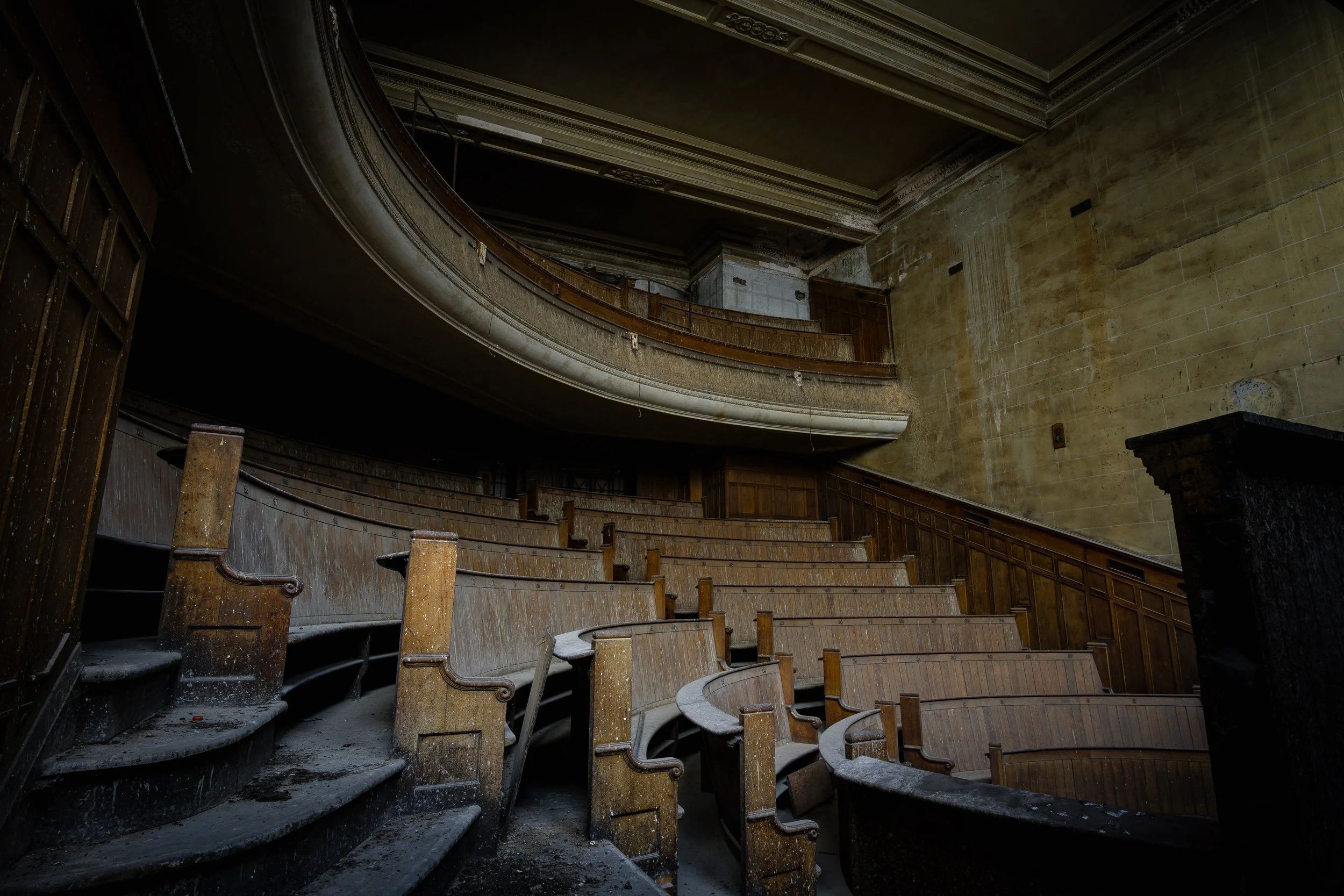The Fruit Exchange - Liverpool
I had passed this place a few times over the years and had a quick nosy, but there never seemed to be an obvious way in, and I was always on my way to something that seemed higher on the priority list. It was a busy, sunny Saturday in the city when I once again found myself walking past the old building, scratching my head and wondering how so many others had managed to crack it over the years. Luckily, on this occasion, I was joined by a fellow explorer who had been inside a while back and was willing to show me the elusive way in. We started off by entering a completely different building and made our way through a maze of corridors and stairwells until we found ourselves climbing out of an internal window into a fire escape that joined a shared roof space.
From here, we climbed down, catching the attention of a nearby resident who looked confused by what he was witnessing. We gave a friendly wave, and he seemed to return to his laptop, apparently unbothered by our presence. Soon enough, we slipped through an open window. We landed straight into the auction room and immediately felt like we had been dropped into a time capsule from the 1920s. The pews were intact, and the main goods holder used during former auctions was still present. The main room was a spectacle, and I was kicking myself for having bumbled past so many times over the years without giving the place the effort it deserved. The surrounding rooms, however, had suffered a more unfortunate fate, with considerable demolition work stripping many of them bare.
Downstairs, it became obvious that the surrounding bars and restaurants were making use of the empty space as a storage area or dumping ground. We spent an hour or so exploring and taking in the atmosphere, all the while hearing sounds from the surrounding businesses and thinking little of it, until a kitchen worker suddenly appeared in front of us.
He was standing there with a bag of frozen goods he had come to collect when he noticed a group of lads with cameras and tripods. We told him we were just photographers and that there was no need to worry, but he didn’t seem too pleased with our presence and said he was going to get the boss. We quickly packed up and made our exit before the "big bad boss" could show up, retracing our steps through the same maze of corridors we had used to enter.
History
“The Liverpool Fruit Exchange, located on Victoria Street in Liverpool’s commercial district, is a Grade II-listed building originally constructed in 1888. Designed as a railway goods depot for the London and North Western Railway, it supported the city's port-related infrastructure during the late Victorian period. In 1923, the building was repurposed by James B. Hutchins into a fruit exchange to accommodate the growing volume of imported perishable goods. The building functioned as a central trading hub where produce including bananas, citrus fruits, and other imported goods was auctioned to wholesalers. It contains two primary auction halls, one of which features an unusual seven-sided (heptagonal) layout. Key internal architectural features include stone staircases, Ionic columns, decorative metal balustrades, and stained glass windows with fruit motifs. Architecturally, the building is representative of the Flemish Renaissance Revival style, constructed with sandstone, featuring arched windows and a hipped slate roof. It comprises three storeys and retains a number of its original design elements. By the latter part of the 20th century, the building experienced a decline in use due to changes in logistics and trading practices. During the late 20th century, parts of the building, particularly the basement areas with access to Mathew Street were converted into entertainment venues. Among these was Eric’s Club, which operated in the late 1970s and hosted performances by artists such as The Clash, Joy Division, The Sex Pistols, and The Ramones. Despite these uses, much of the building remained unoccupied for several decades. In August 2024, Liverpool City Council approved a redevelopment proposal submitted by JSM Company Group. The approved plan involves the conversion of the building into an 81-room hotel, including the restoration of the original auction rooms, a restaurant, and a bar accessible from Mathew Street”.














